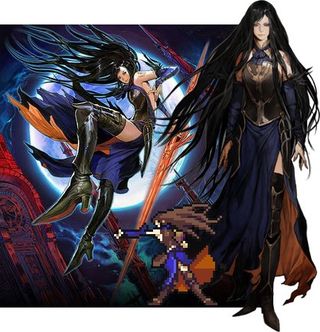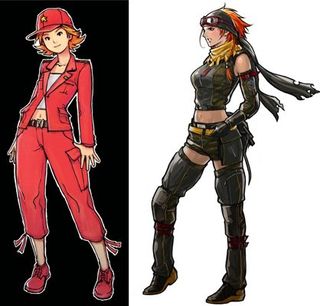GamesRadar's Officially Annual Platinum Chalice Awards 2008
The coolest, most attractive end-of-year awards list on the planet
The moderate hype train for Dark Sector’s March release was effectively muffled by feverish anticipation for GTA IV, which hit shelves one month later. Then, once the Gears of War 2 promos started trickling in, promising more violence, more locusts and more, well, everything, Sector’s gruesome gunplay was quickly forgotten.

This is where we say “hurrr shame on yous for missing qualitay gamez.” It may not be Gears, but Sector sure as hell plays like it, with an excellent cover system, furiously intense shooting and lots of blood ‘n’ guts dismemberment. In that respect, Sector actually outdoes Gears by letting you guide lame-o protagonist Hayden’s razor-sharp glaive weapon directly to enemy limbs. As grotesque as it is, there’s something creepily satisfying about watching an enemy soldier look down at his severed legs with a look of wide-eyed terror. And with so many animations and combinations for finishing moves, this turns out to be more violent than the neutered Manhunt 2 we were all so graciously protected from.
It’s not just the red stuff though – you get several new weapons and abilities as the game wears on, so you have to change your battle tactics to combat enemies specifically designed to get around your new powers. By the end of the game you can turn invisible, project a force field and harness elemental attributes with the glaive, all of which make Hayden a completely different character than he is in the first level. Oh, it’s all very linear, just like Gears, but this great sense of power progression had us playing through the more than once just to re-live the best moments.

Thanks to eye-popping environments, deep addictive multiplayer and strategic gameplay that rewarded brains over reflexes, the first Rainbow Six Vegas emerged as one of 2006’s best shooters. 2008’s sequel, released way back in March, is equally excellent for all the same reasons - don’t let the overused, overrated “Tom Clancy” prefix scare you away.

The gothic world of Castlevania is no stranger to handsomely effeminate men, but for the first time in many, many years we were treated to a badass brunette of the fairer sex. Shanoa, the magic-tattoo-covered heroine of the latest entry, busts up the boys club that is the Belmont clan and does it without shedding every last scrap of clothing and with a reasonable bust size, too.

The slinky, low-backed dress reveals more than her alluring figure – it allows her many glyph markings to show. Each one represents a spell she can cast, from summoning monsters to blasting lightning to conjuring magical weapons tailor made for vampire slaying. This skin-tight arsenal makes her a one-woman army, more than capable of hanging out with Simon, Trevor and the rest of the manly men in Castlevania’s past.
Shanoa’s got the looks and the sexy-yet-practical wardrobe, but what is she like on her off time? Well, most of the game she’s completely without emotion so you don’t get to know her too well, other than she’s been training her whole life and has a strong moral compass. Given the state of some of the other female “portrayals” in gaming, we’ll take that last attribute over a back-breaking rack any day of the week.
Sign up to the 12DOVE Newsletter
Weekly digests, tales from the communities you love, and more

By whose hand at fair Ubisoft doth this prim-looking stargazer emerge? Done up with feathered hair, breezy top and free spirited Capris, Elika emerged from the Prince of Persia reboot as the strong, sexy, helpful type. Hats off to Ubi for creating an engaging character without using gender as a personality crutch.

For on-the-go war mongering, there’s no better series than Advance Wars. Its accessible, addictive battles have made it a handheld staple for years, thanks in no small part to its infectiously cute take on the grim reality of war. Yes, war in Advance Wars was usually a cheery affair starring a team of teenage go-getters ready to “go, fight, win!” their way to the top. Hardly any consequences, barely any real sense of danger. And we liked it that way.
Then Days of Ruin was announced. The name alone raised an eyebrow, then we saw the bleak, desolate direction the series was taking. Compare the earlier games to this year’s miserable setting:



On the left, happy-go-lucky generals. On the right, denizens of a world obliterated by meteors, plagues and roving bands of Road Warrior-esque bandits. Throughout the game’s lengthy quest, not one positive thing happens to Will, Brenner, Lin and the rest of the crew. Instead, they’re battered, run out of their home, stricken with diseases and harassed by unruly citizens. It’s about the furthest possible jump the series could have taken, and at first, we were dumbfounded.
Then, after playing through the game and getting to know these characters, we found them to be genuinely likable and more than paper-thin caricatures seen in the previous games. Gameplay followed suit with more down-to-earth weaponry and played-down the game-changing superpowers from Dual Strike. Quite plainly, it undid everything we claimed to love about the series’ presentation, completely flipped it around and made something just as enticing as all that came before it.

Amazingly, Metal Gear Solid 4 managed to take two of the series’ most widely reviled twists – Snake turning into an old man and Raiden existing at all – and make them awesome. While we were admittedly disappointed by it at first, Snake’s old age helped make him even more tragic and interesting than before, and Raiden was turned into such a ruthless badass that some fans actually want to play as himnow. Who the hell saw that coming?












